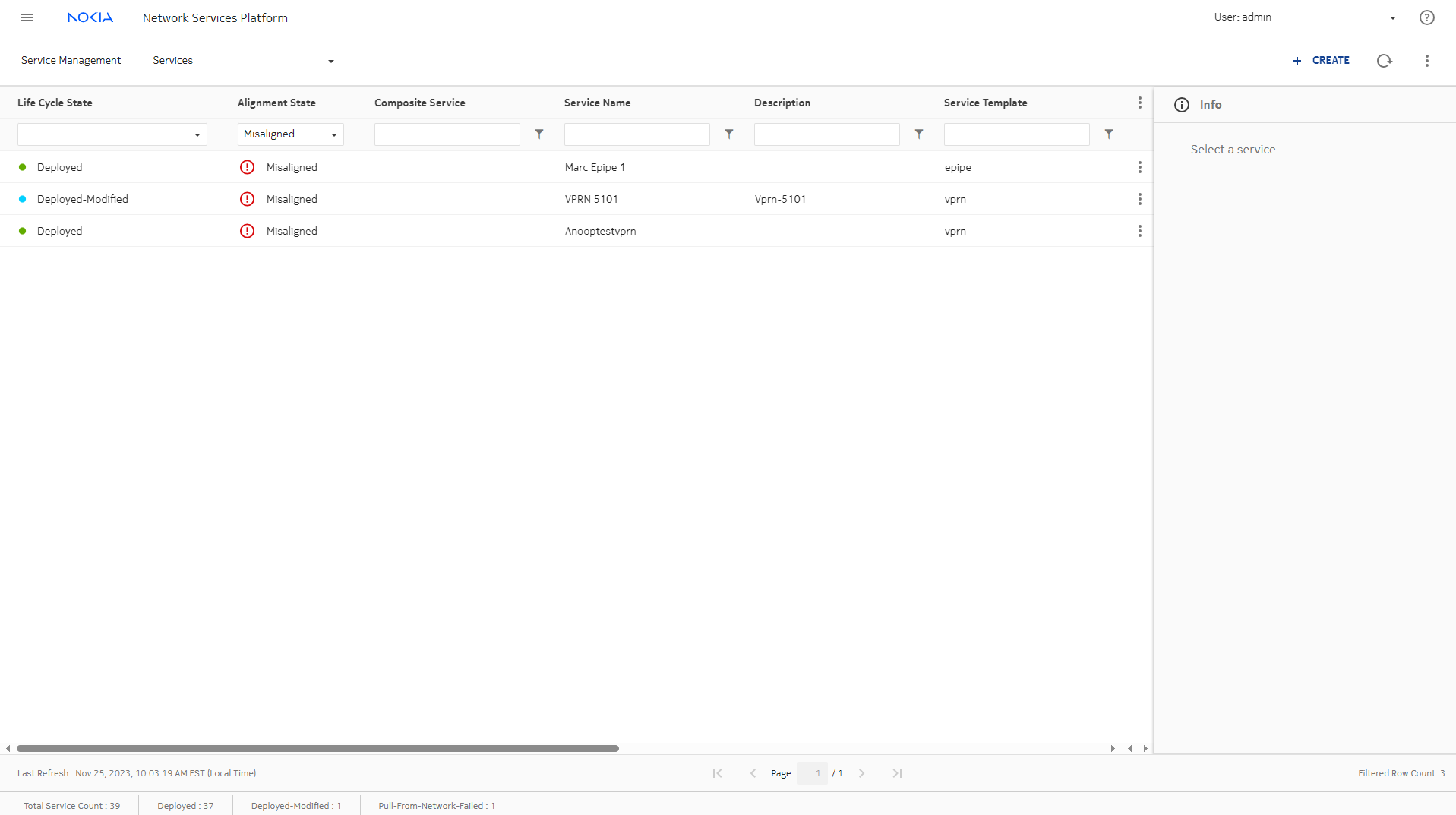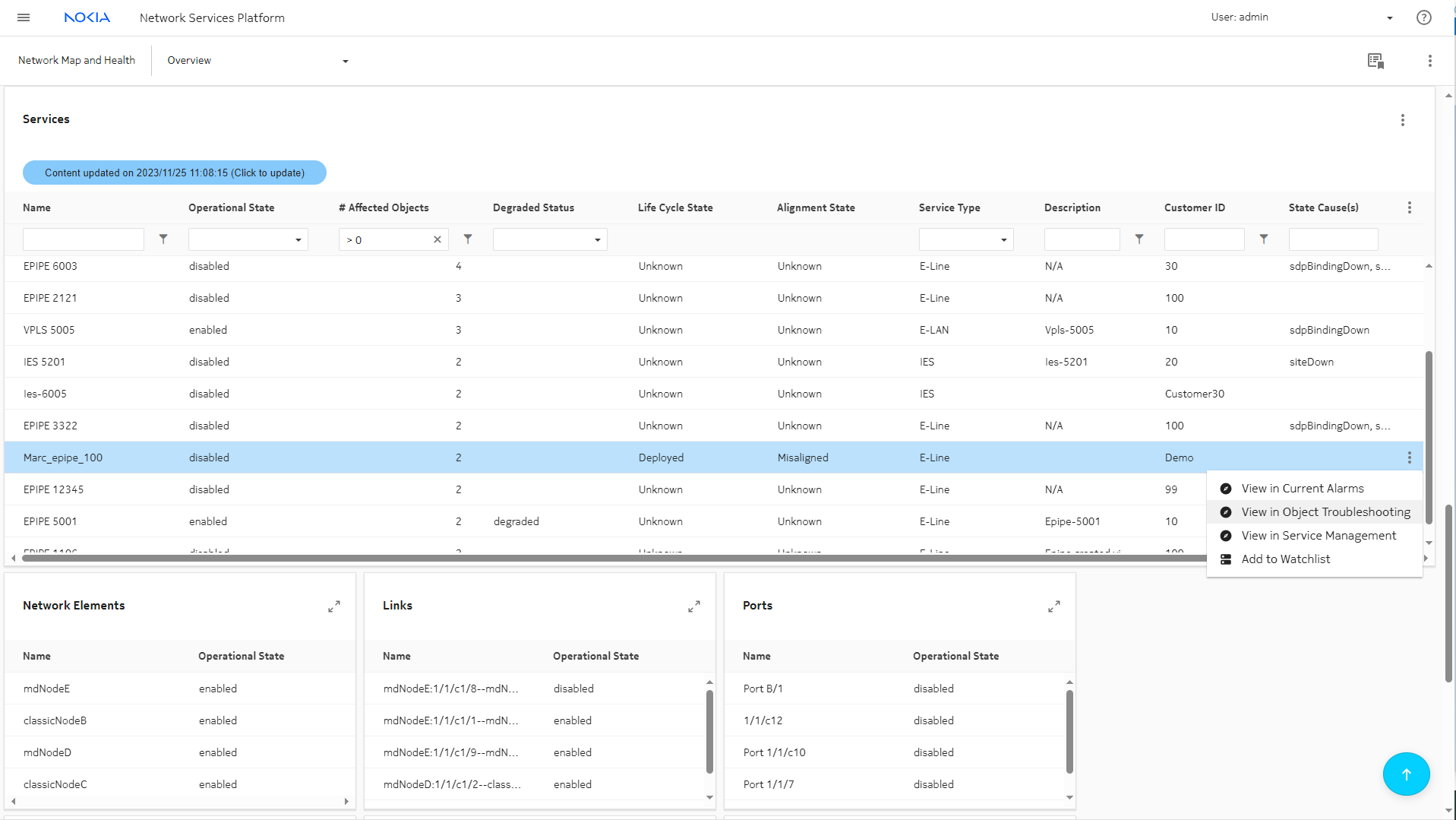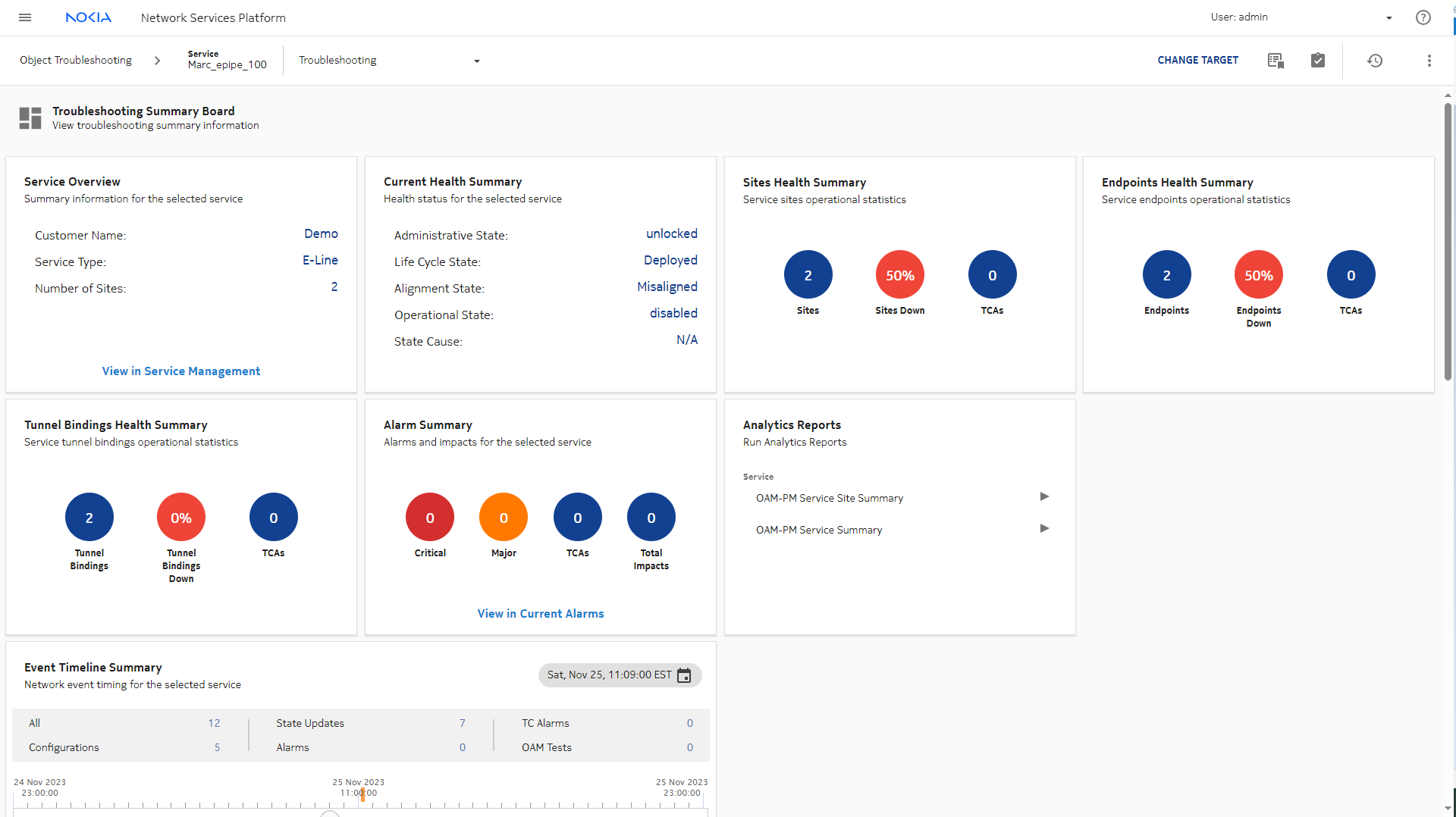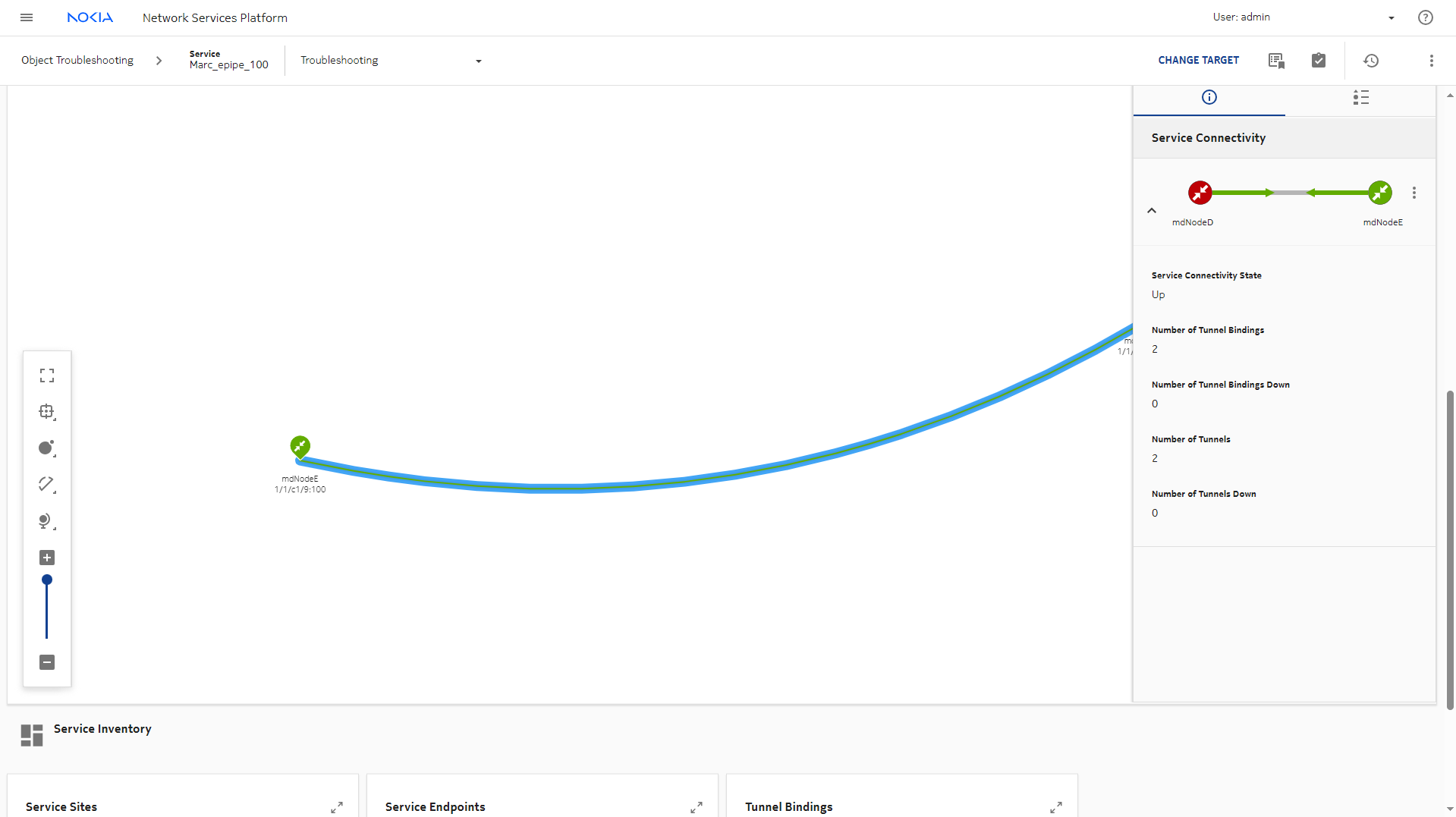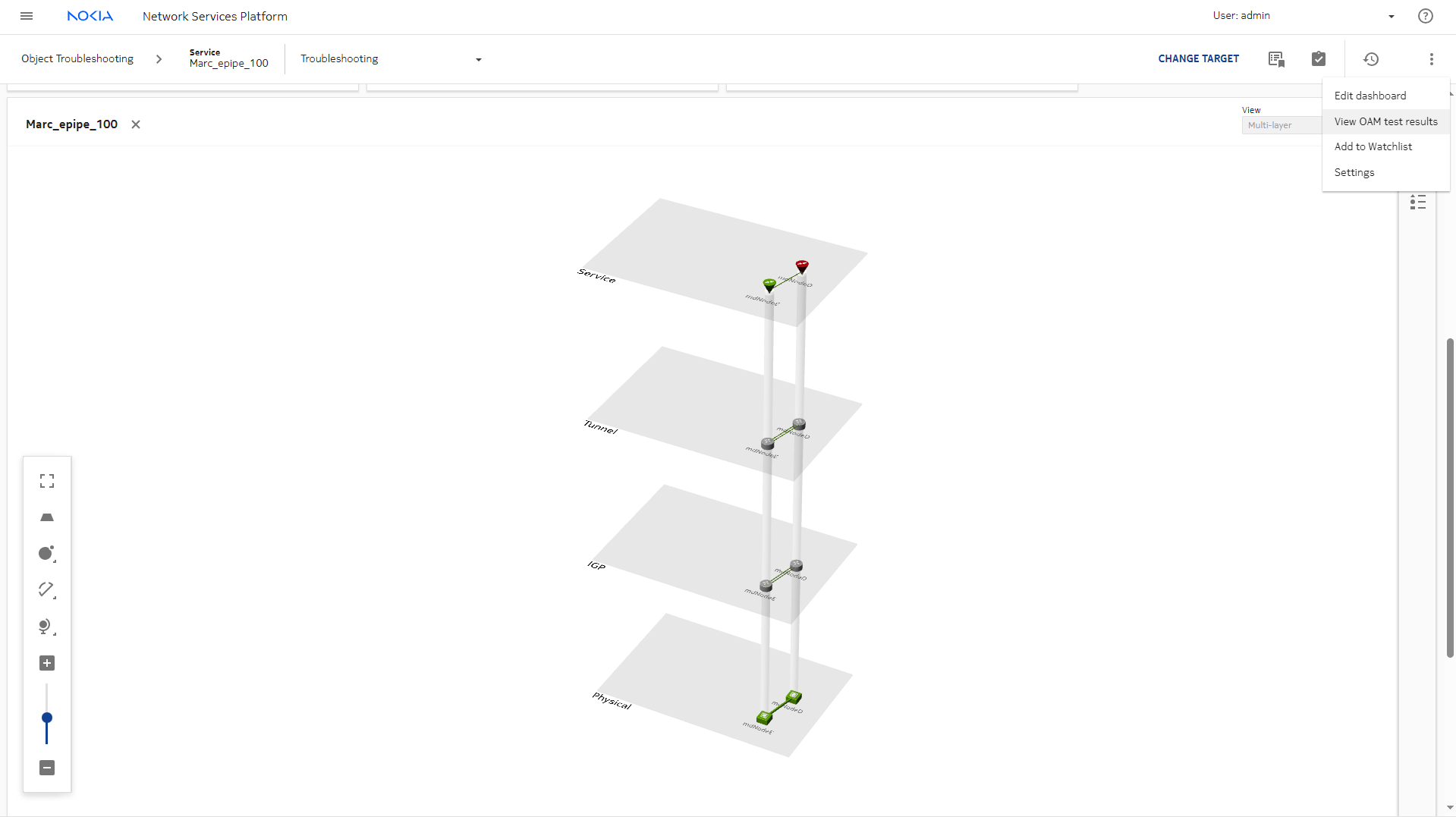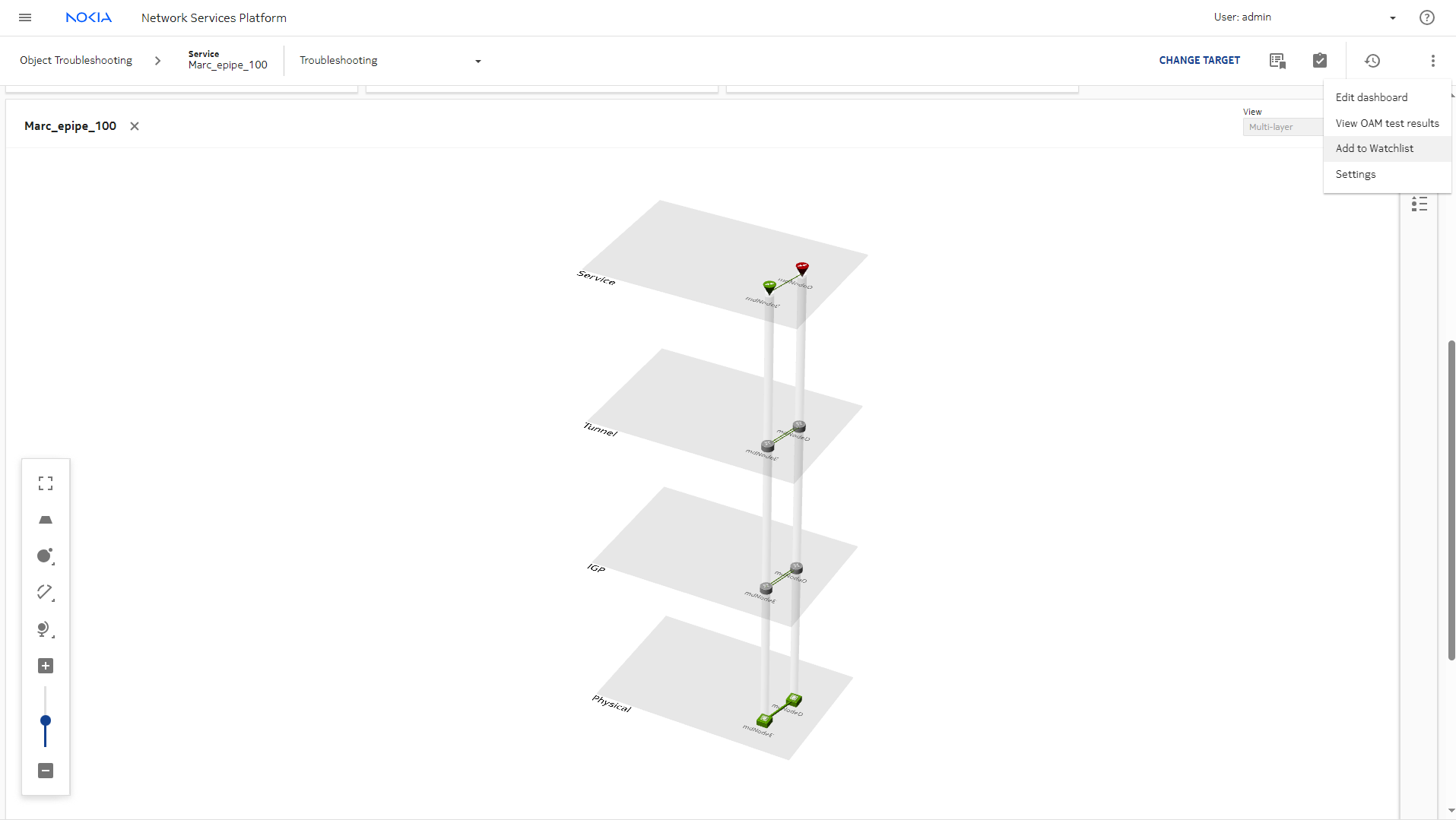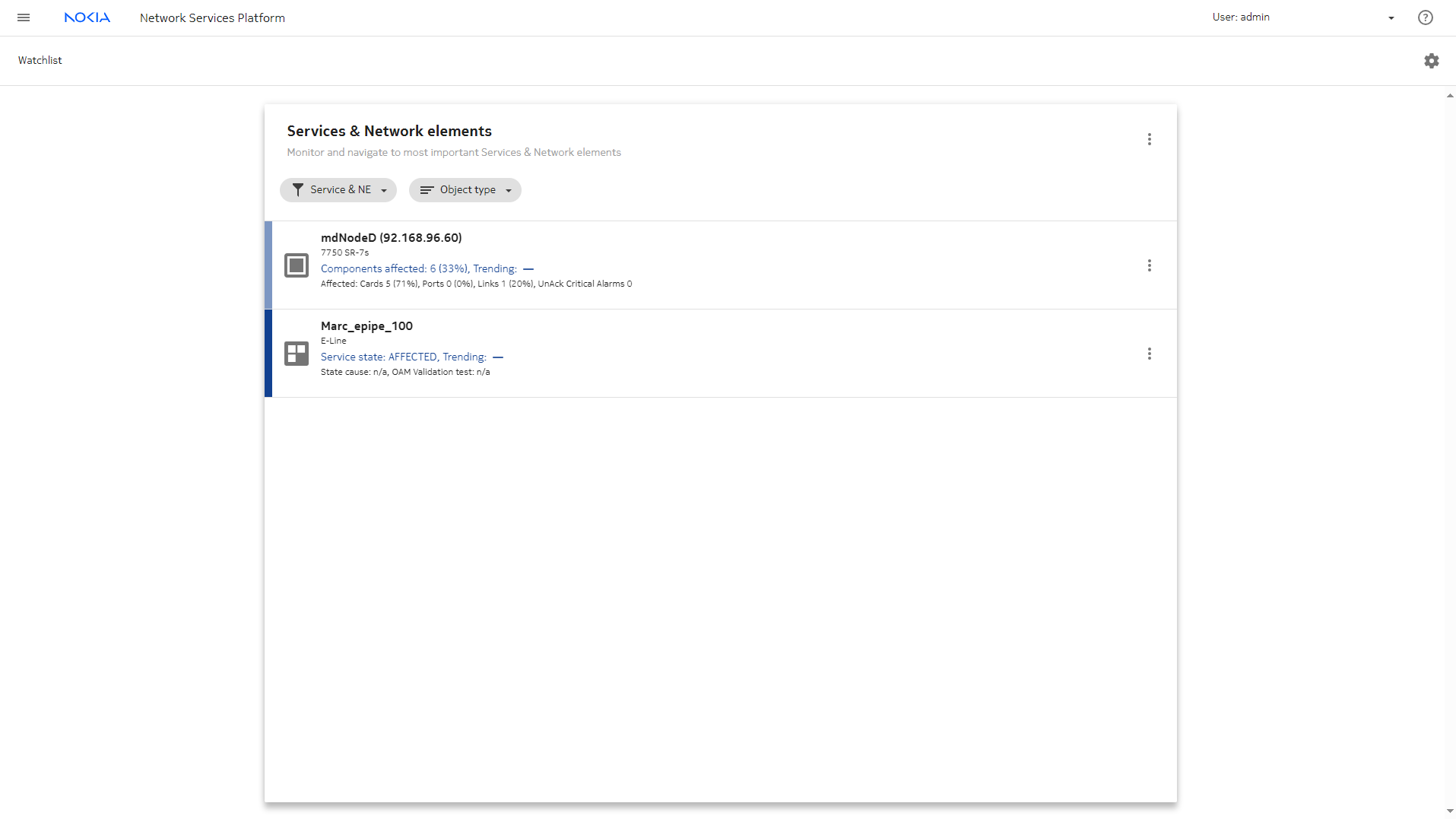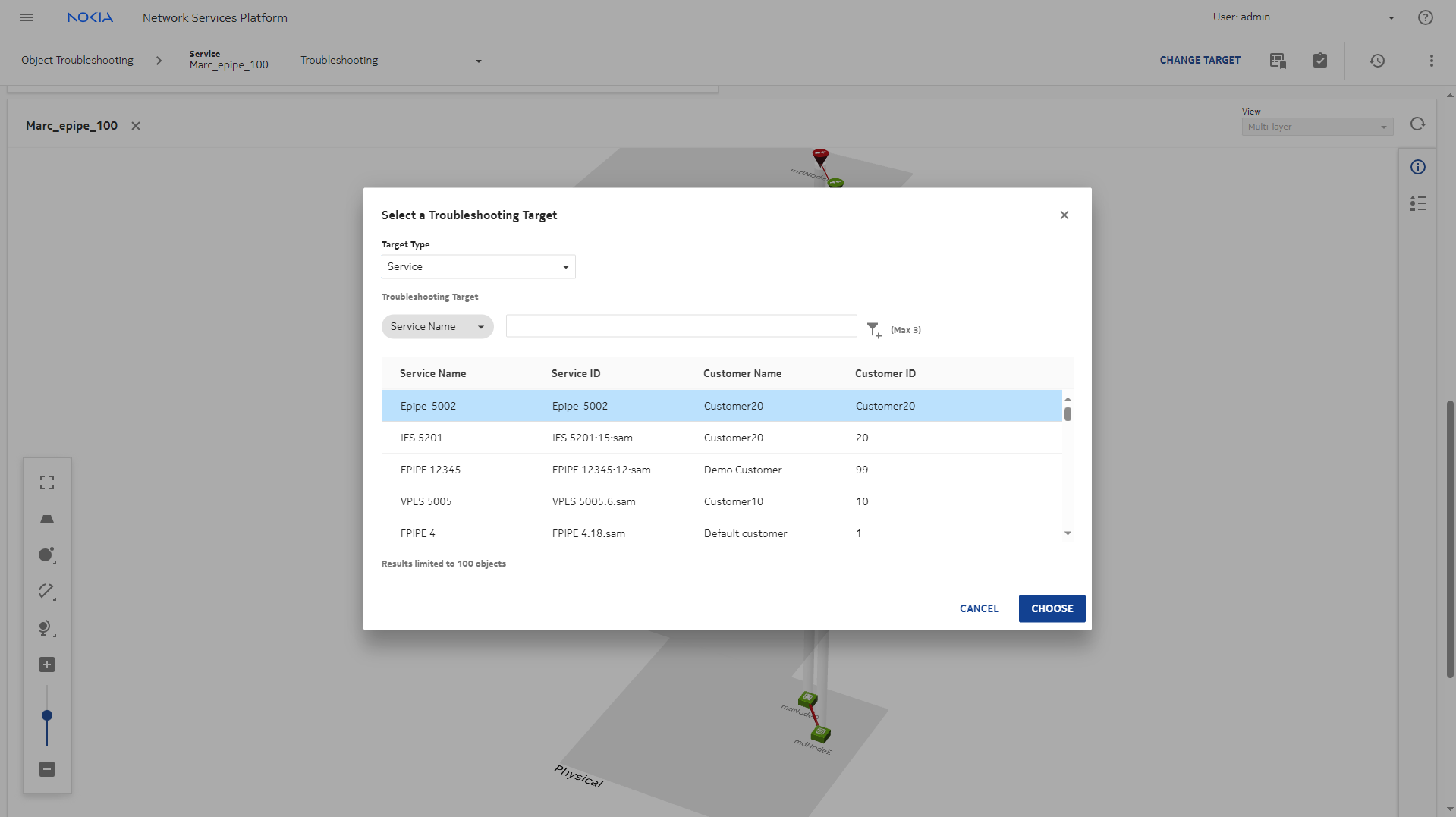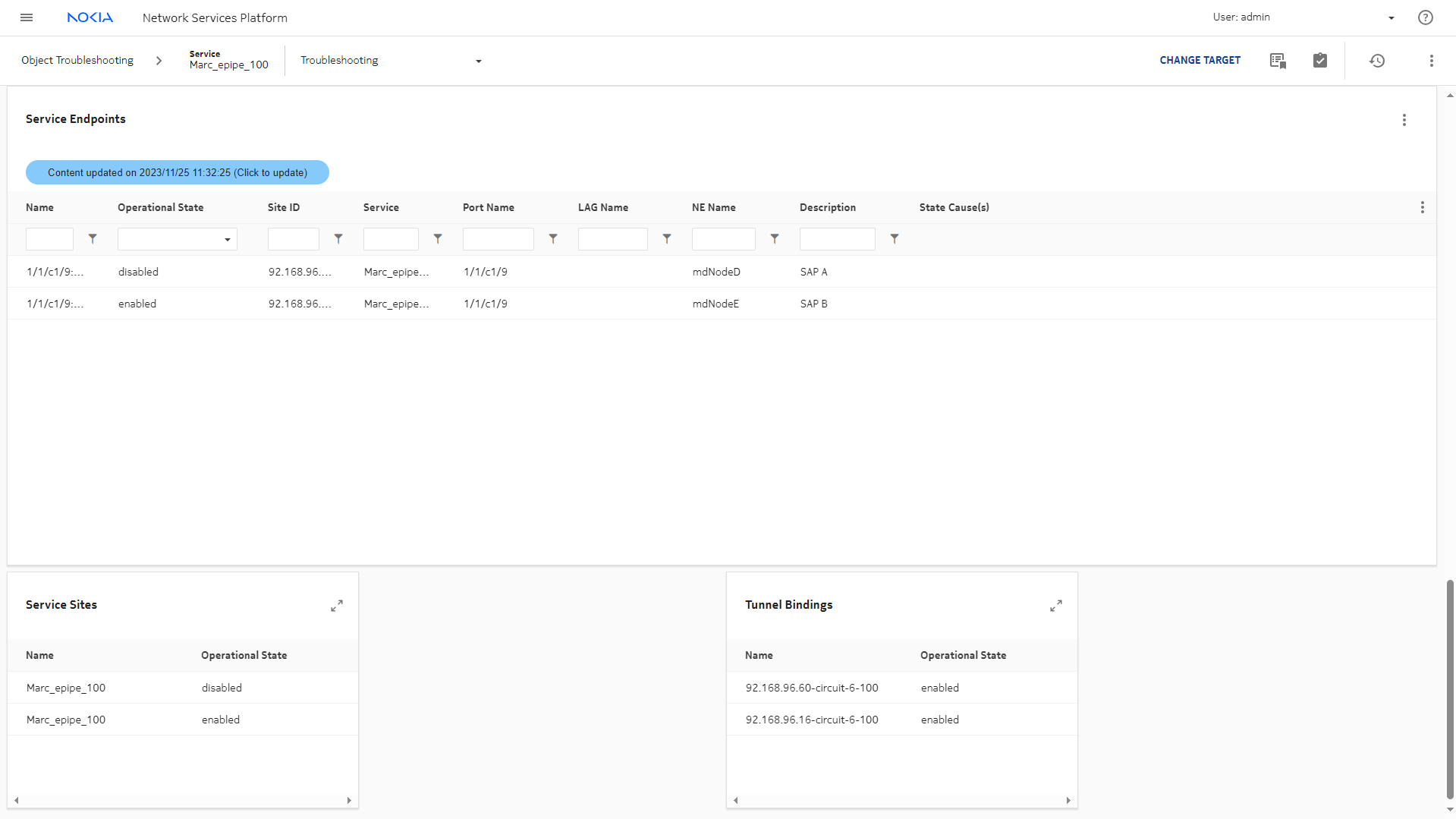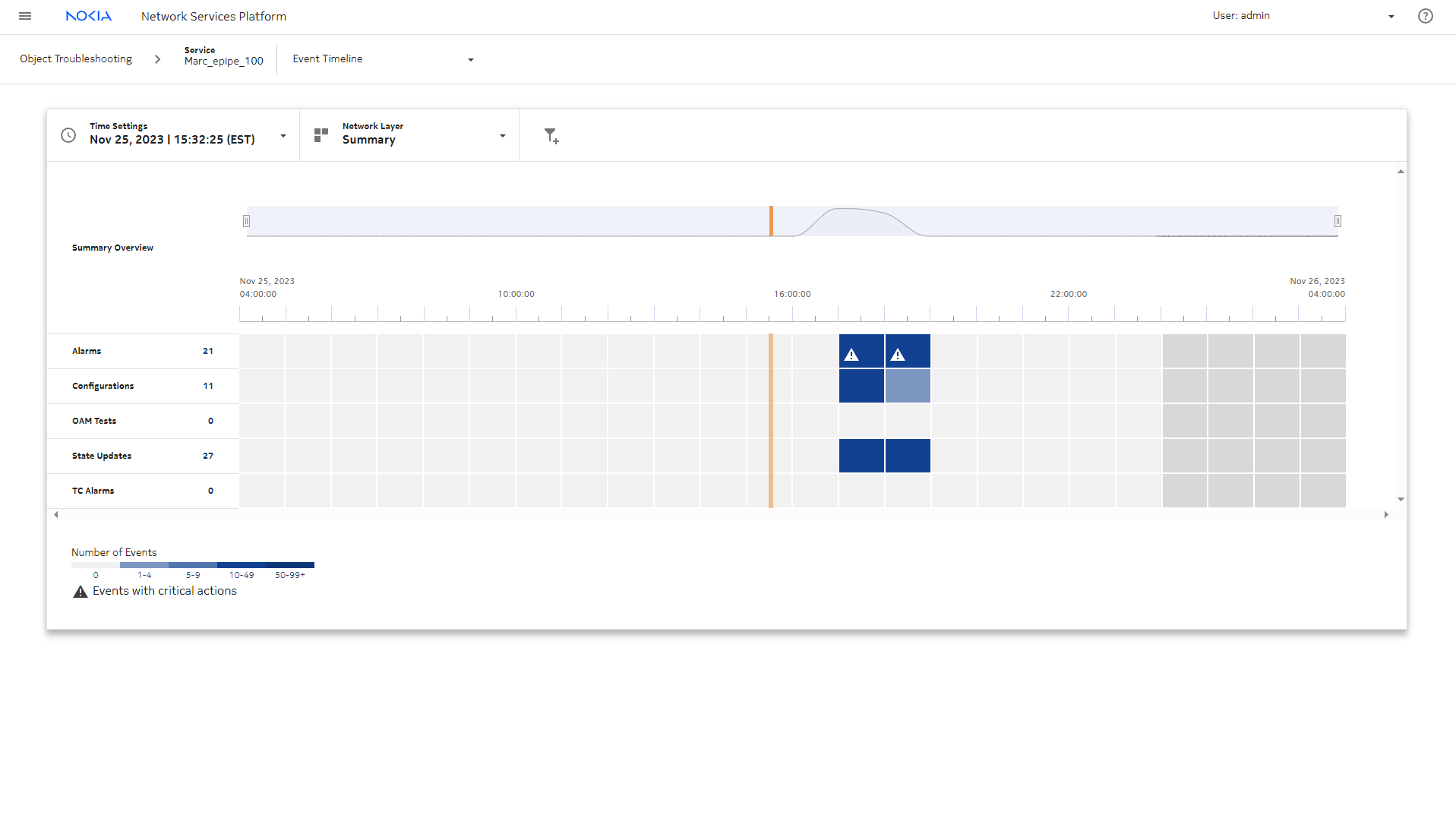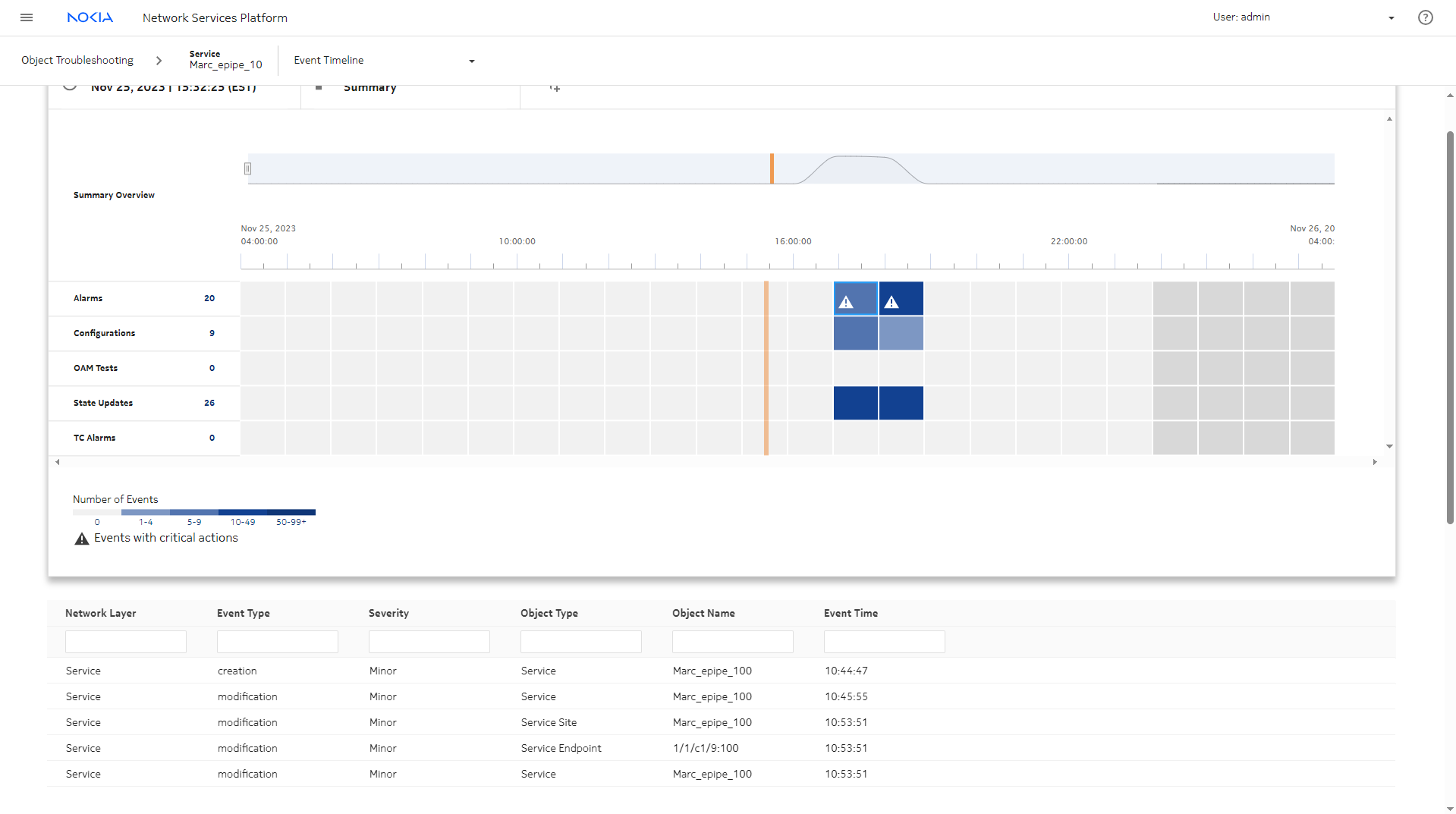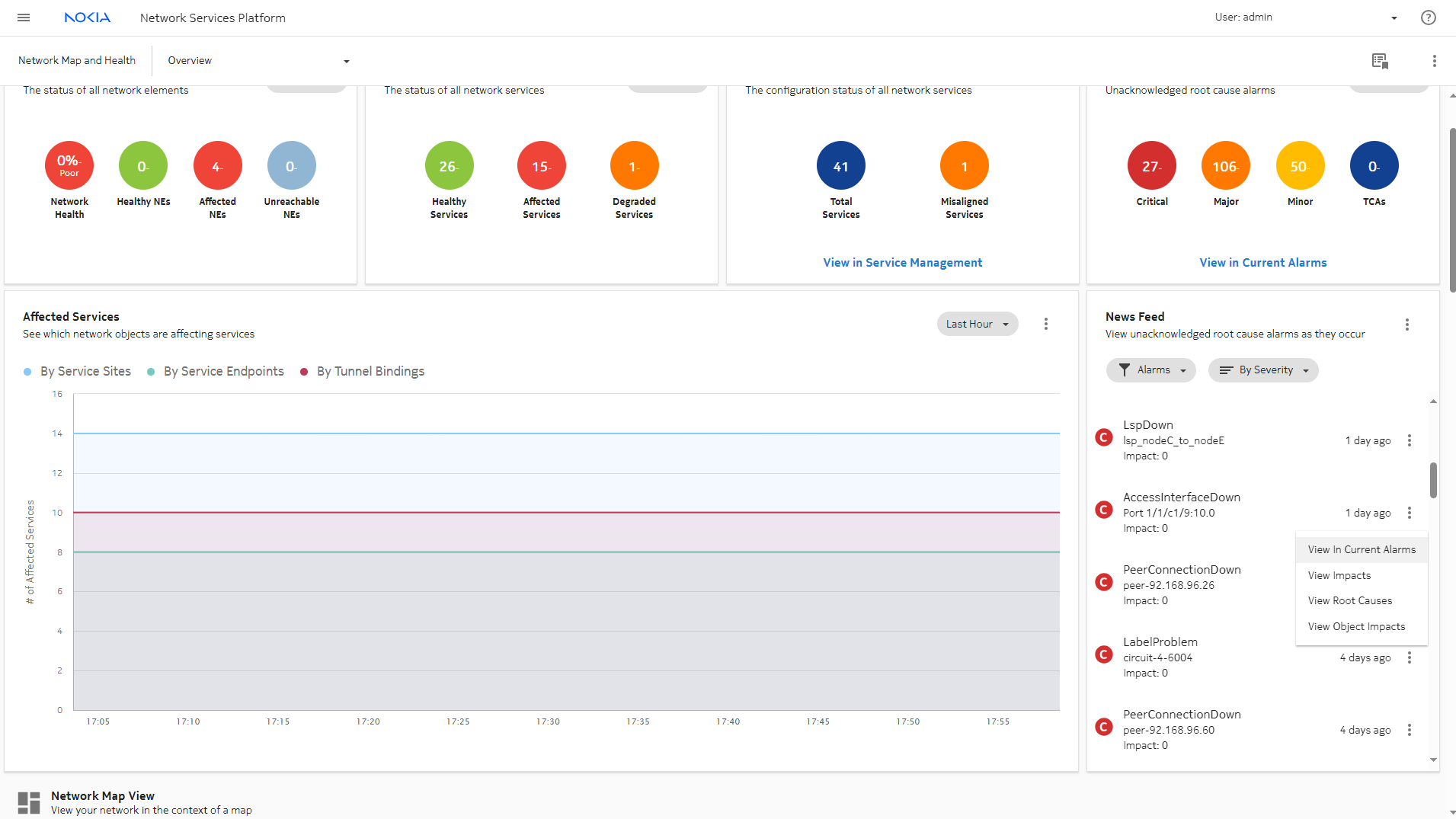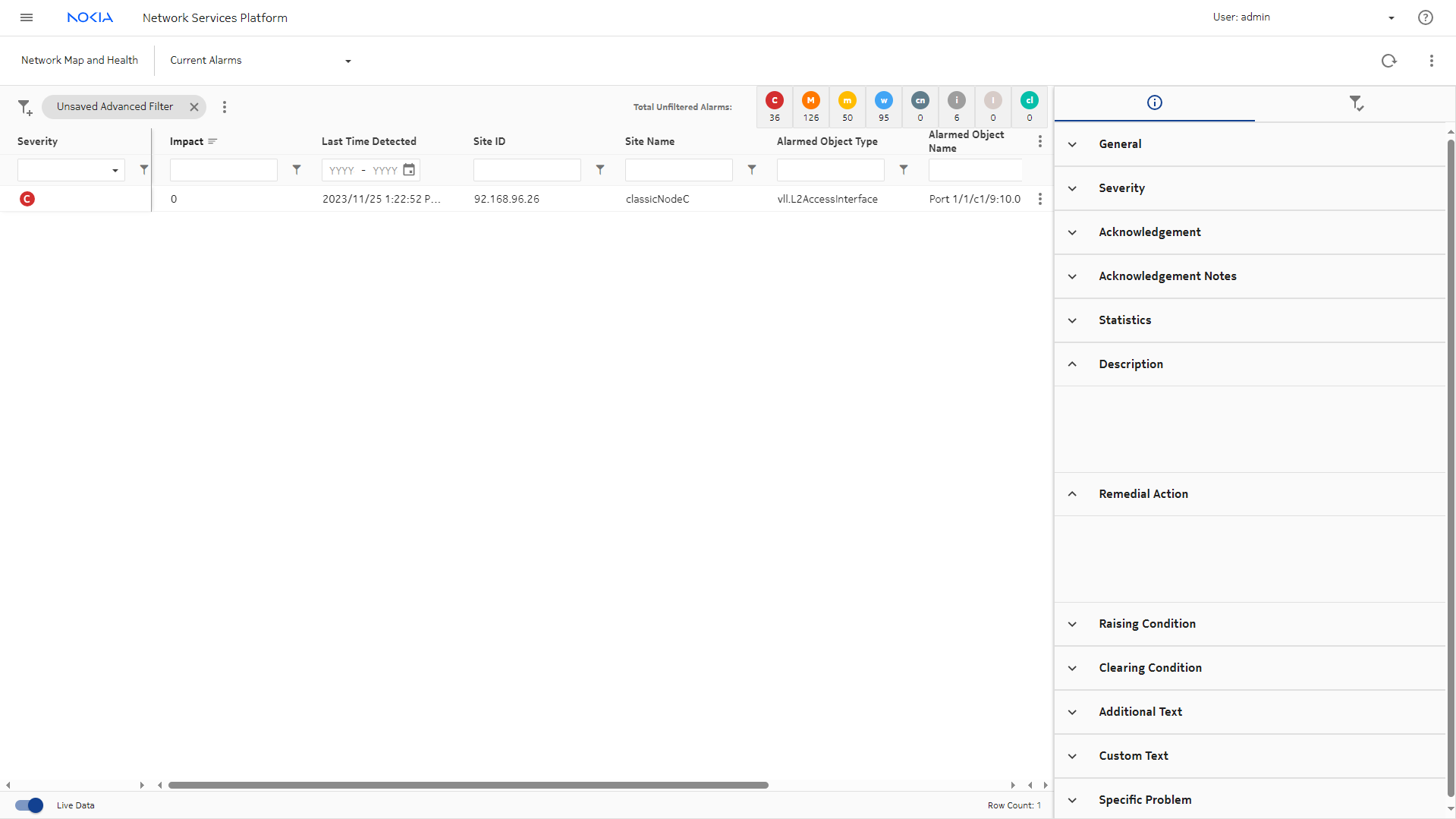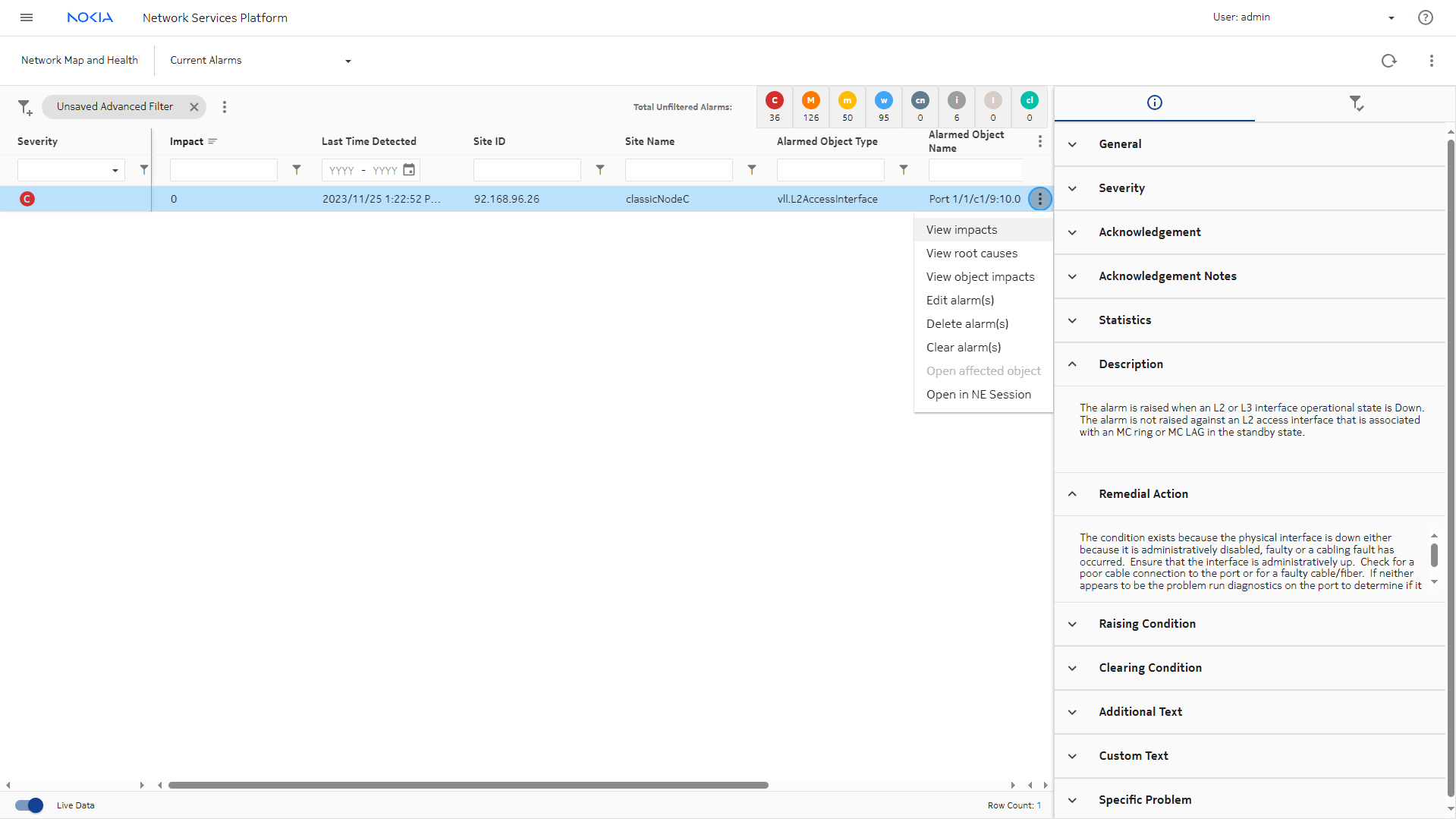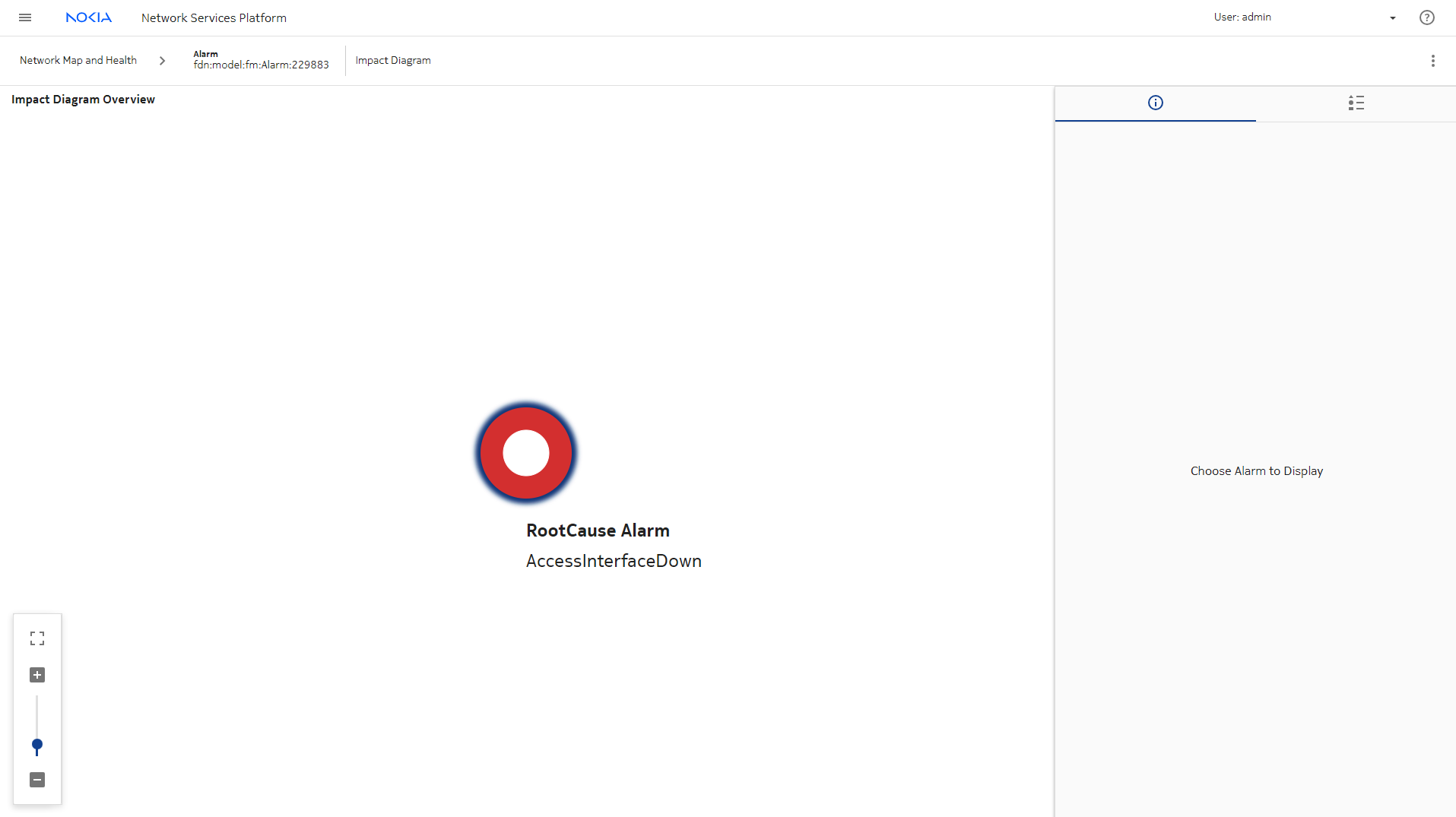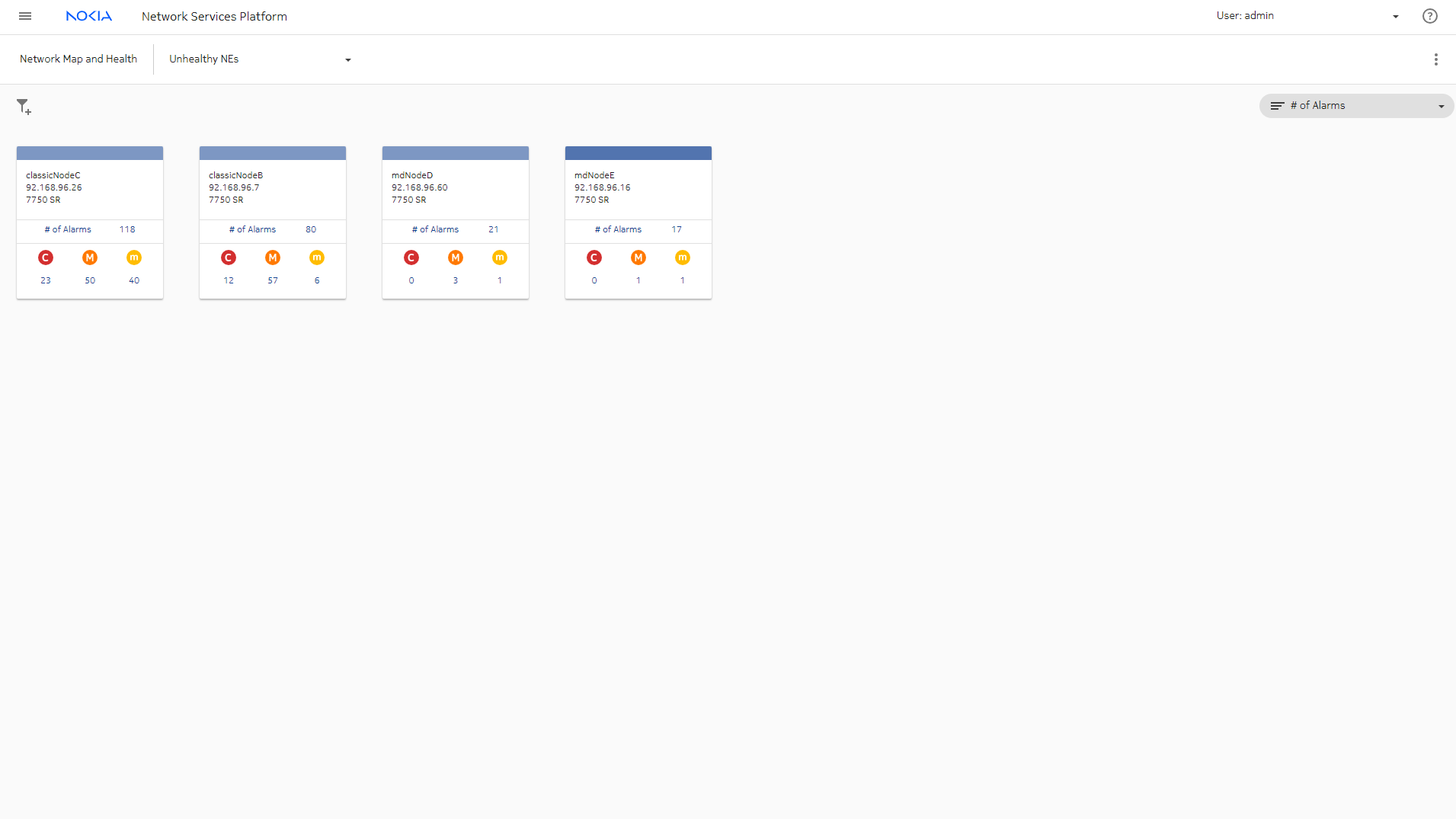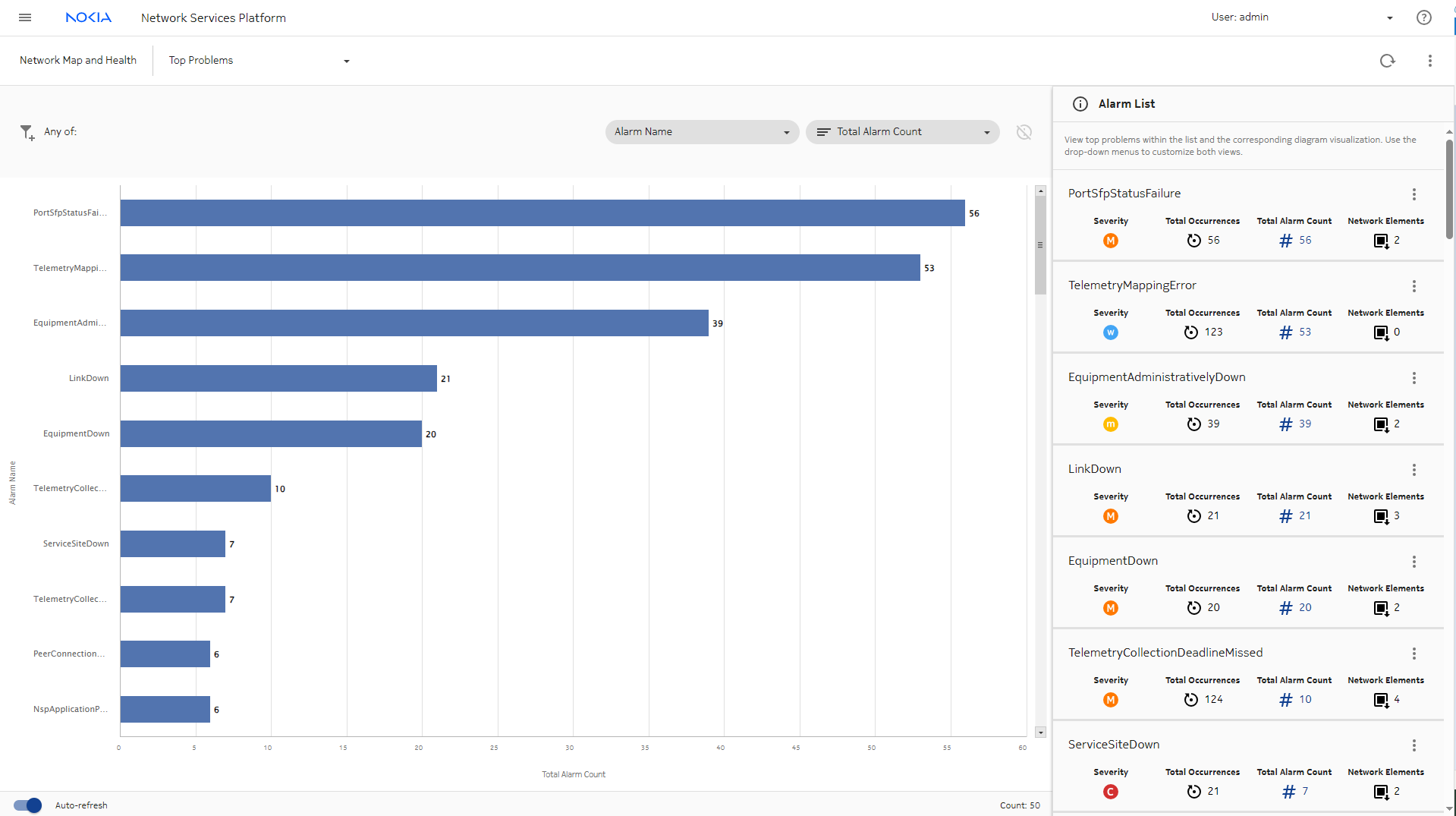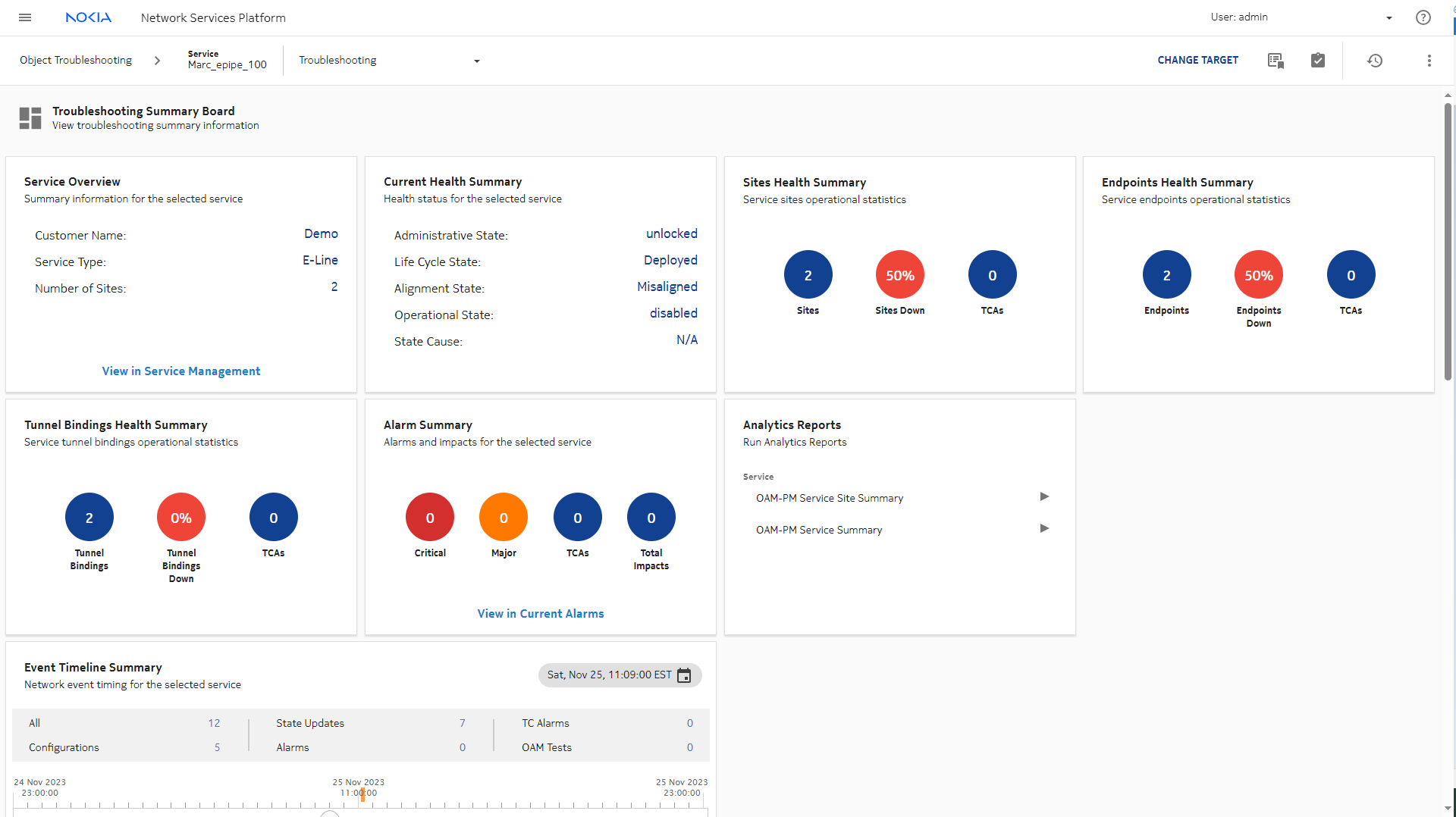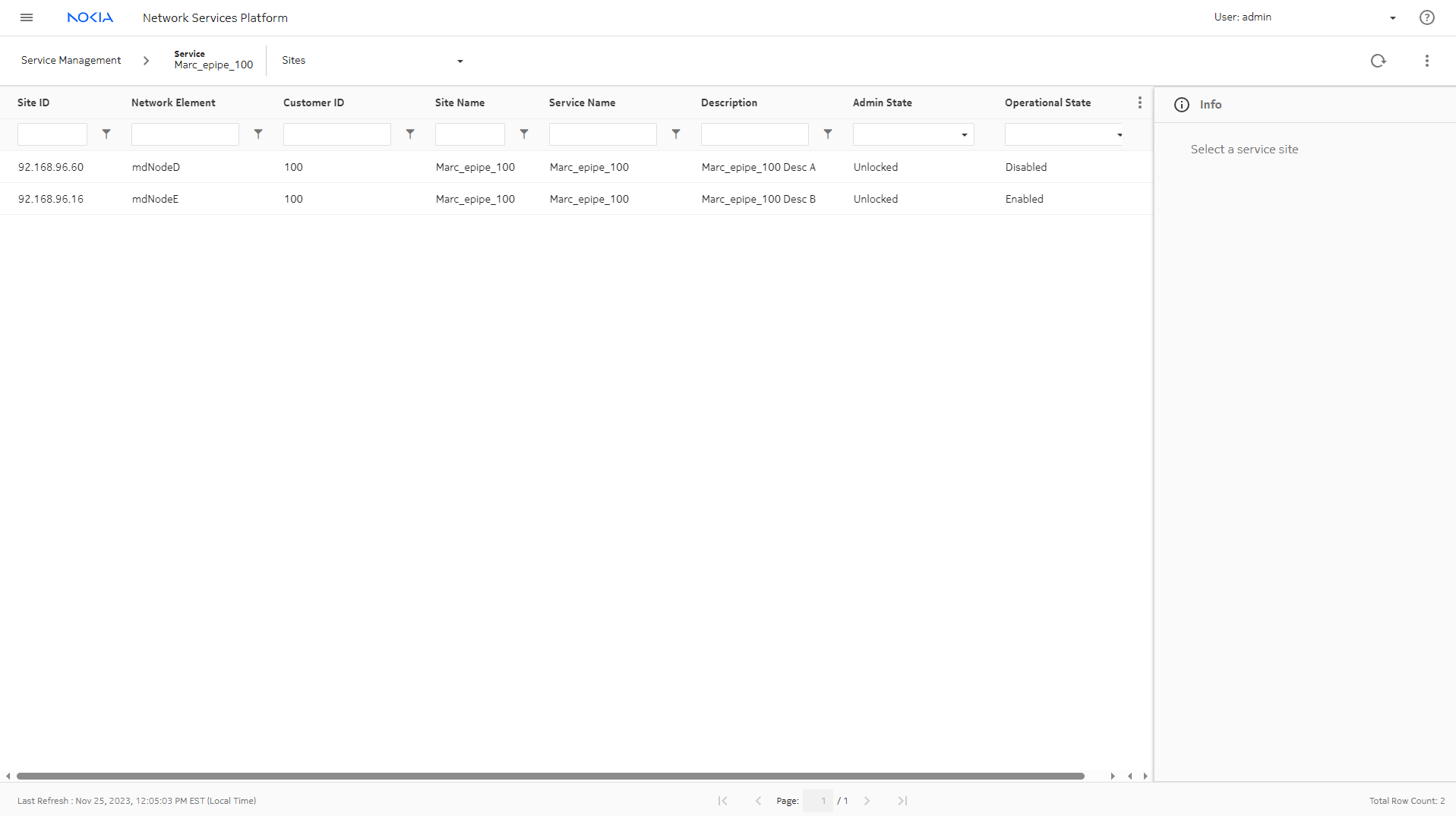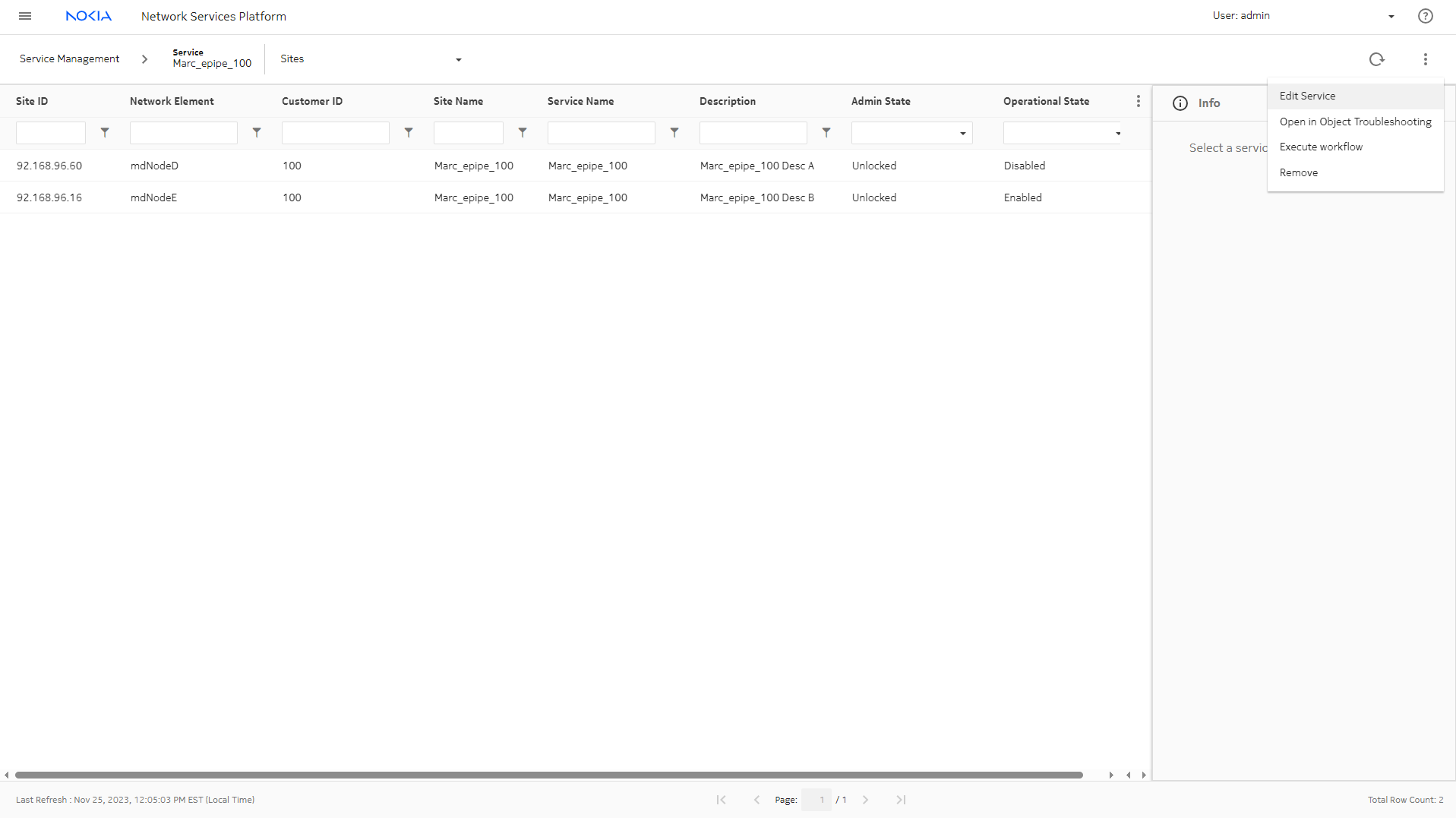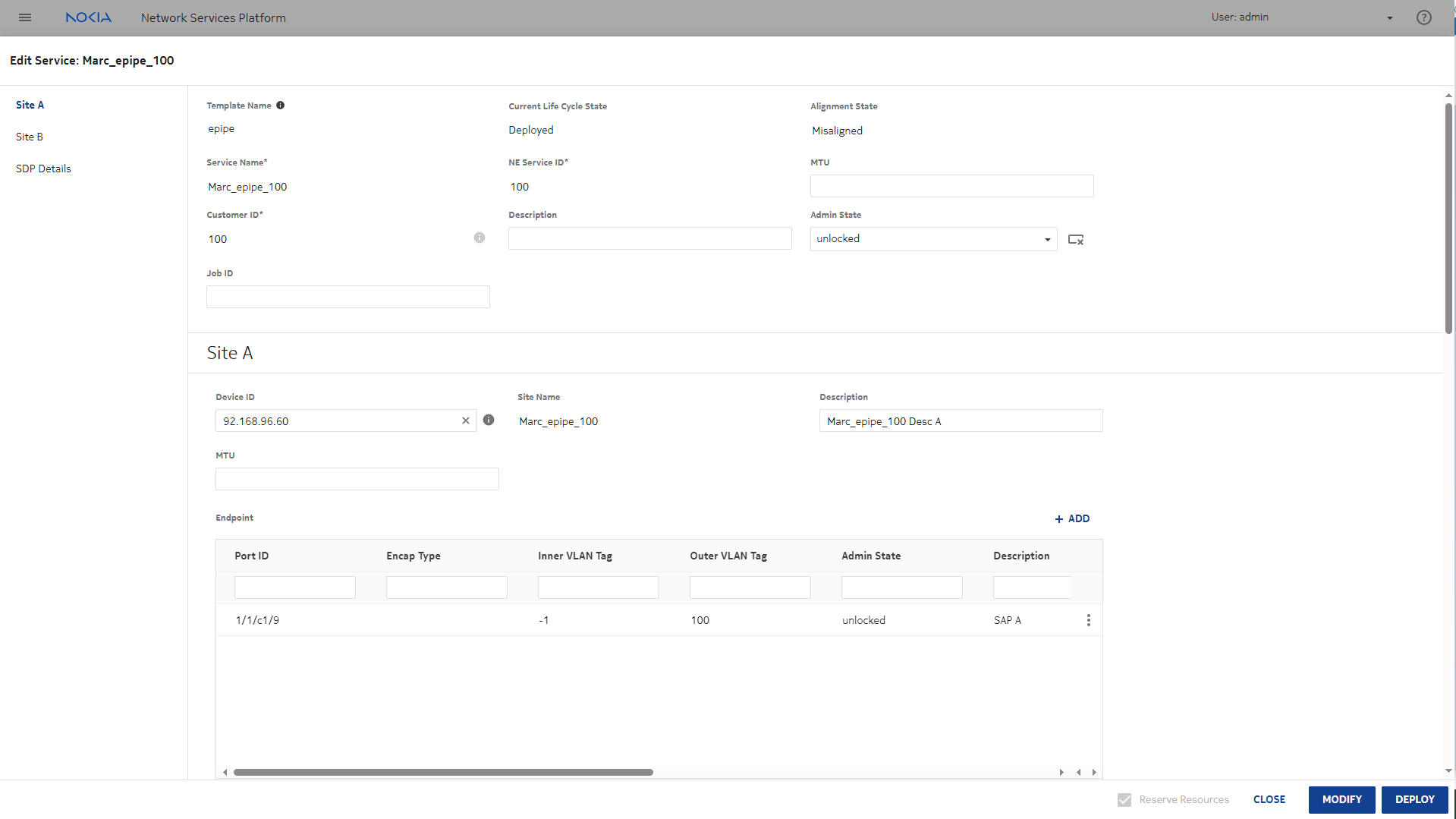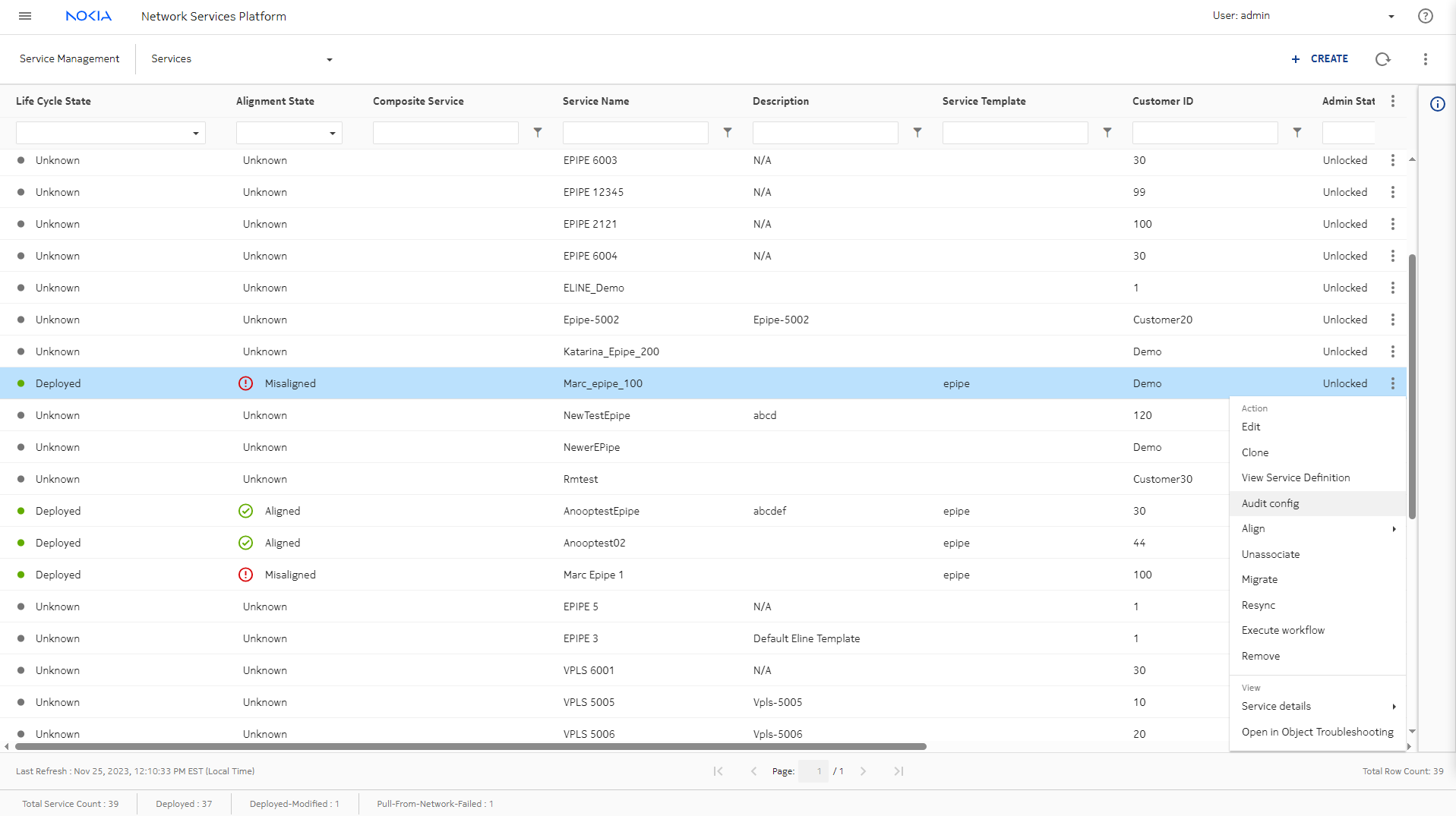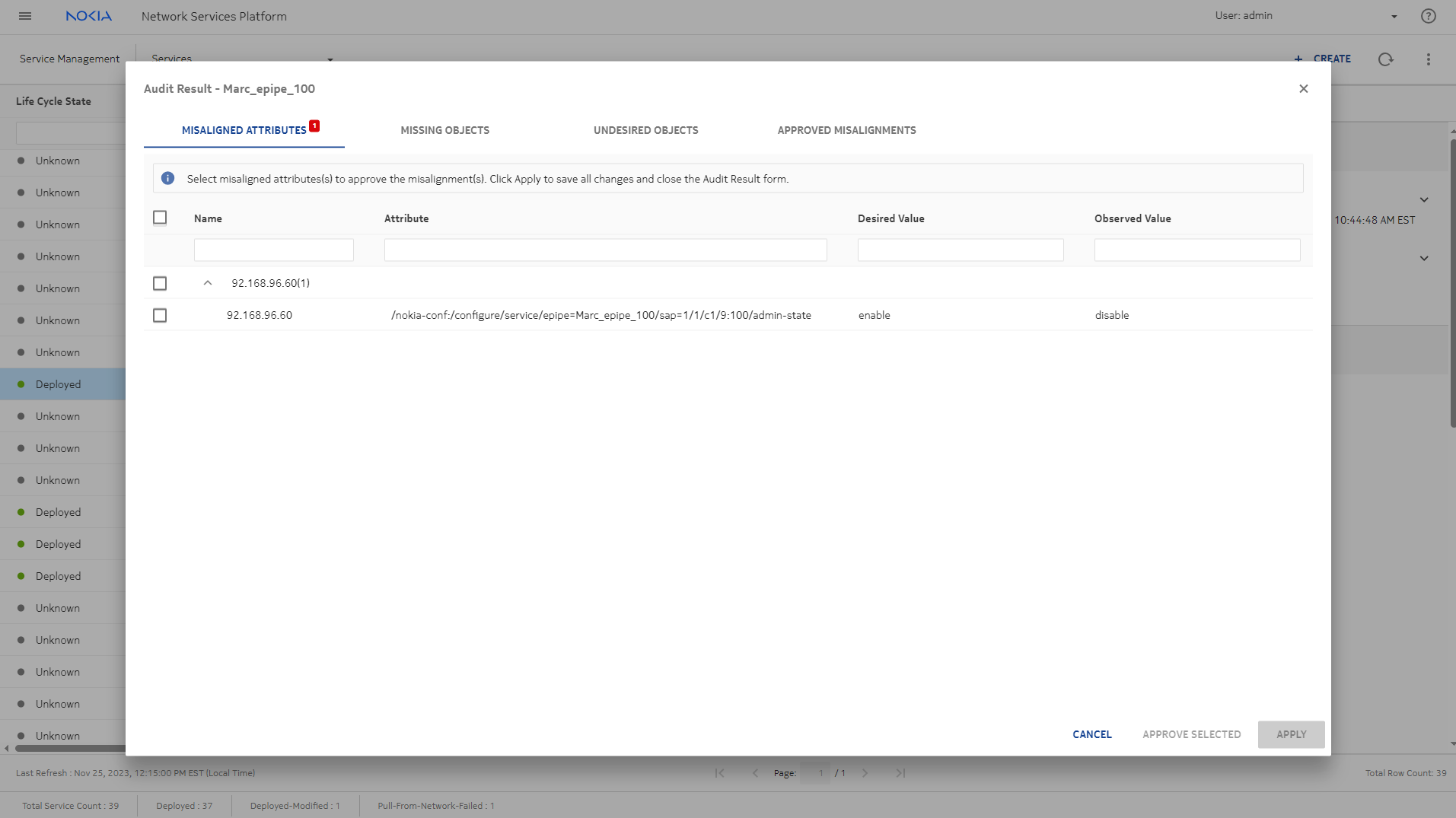End-to-end service troubleshooting scenario
Purpose
This process shows you how to troubleshoot issues on services.
In this scenario, a service is experiencing problems.
View service health summary
Explore the Object Troubleshooting dashboard
Investigate service alarms from the News Feed
Another option for investigating alarm details is to start from the News Feed. The News Feed provides a live feed of unacknowledged root cause alarms as they occur in real time. Alarm severity and number of impacts are displayed, and cross launch is available depending on the alarm. All alarms can cross launch to the Current Alarm List.
View service provisioning details
Returning to the Troubleshooting dashboard, we can also launch Service Management to look at the provisioning of the service.

